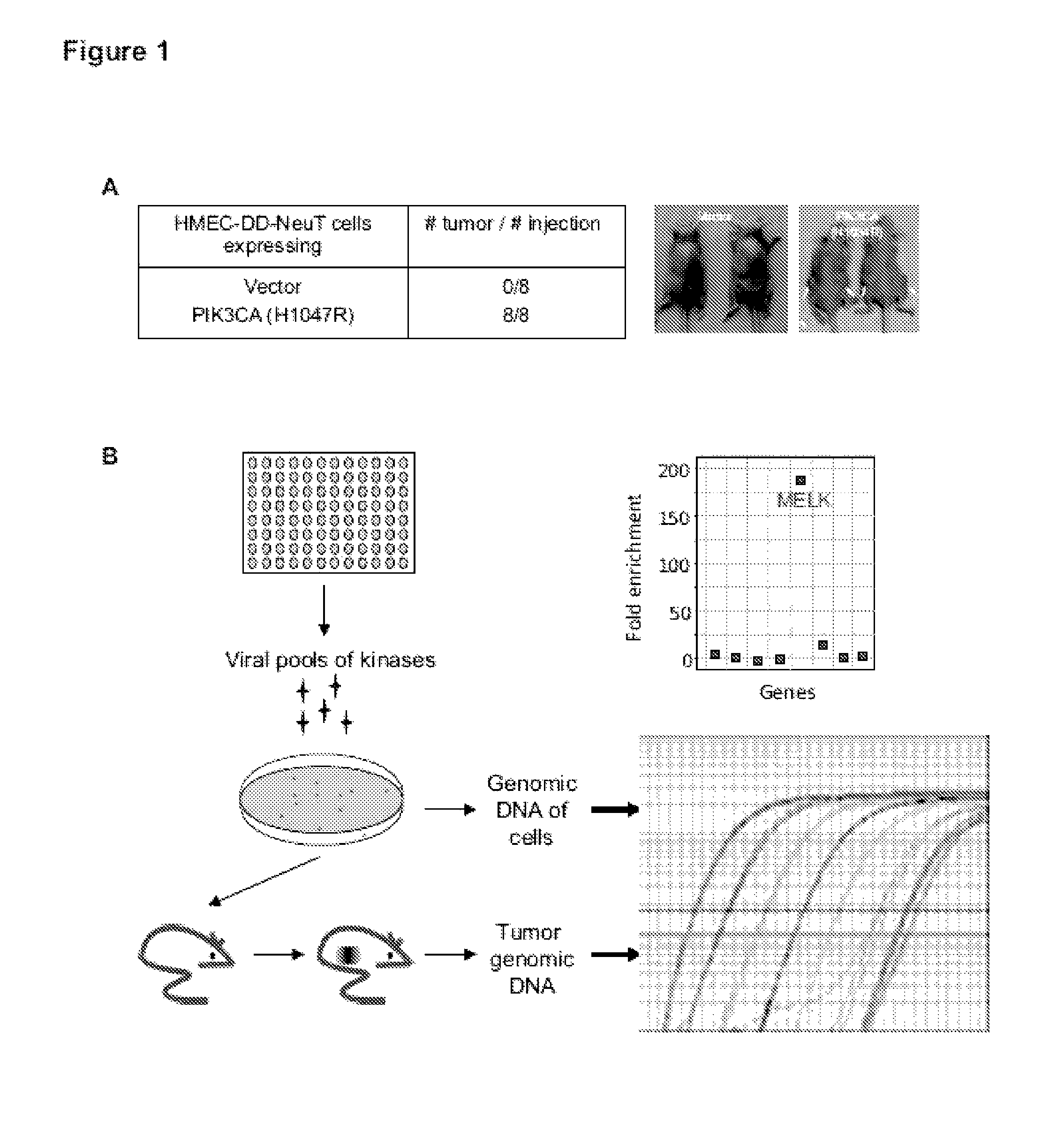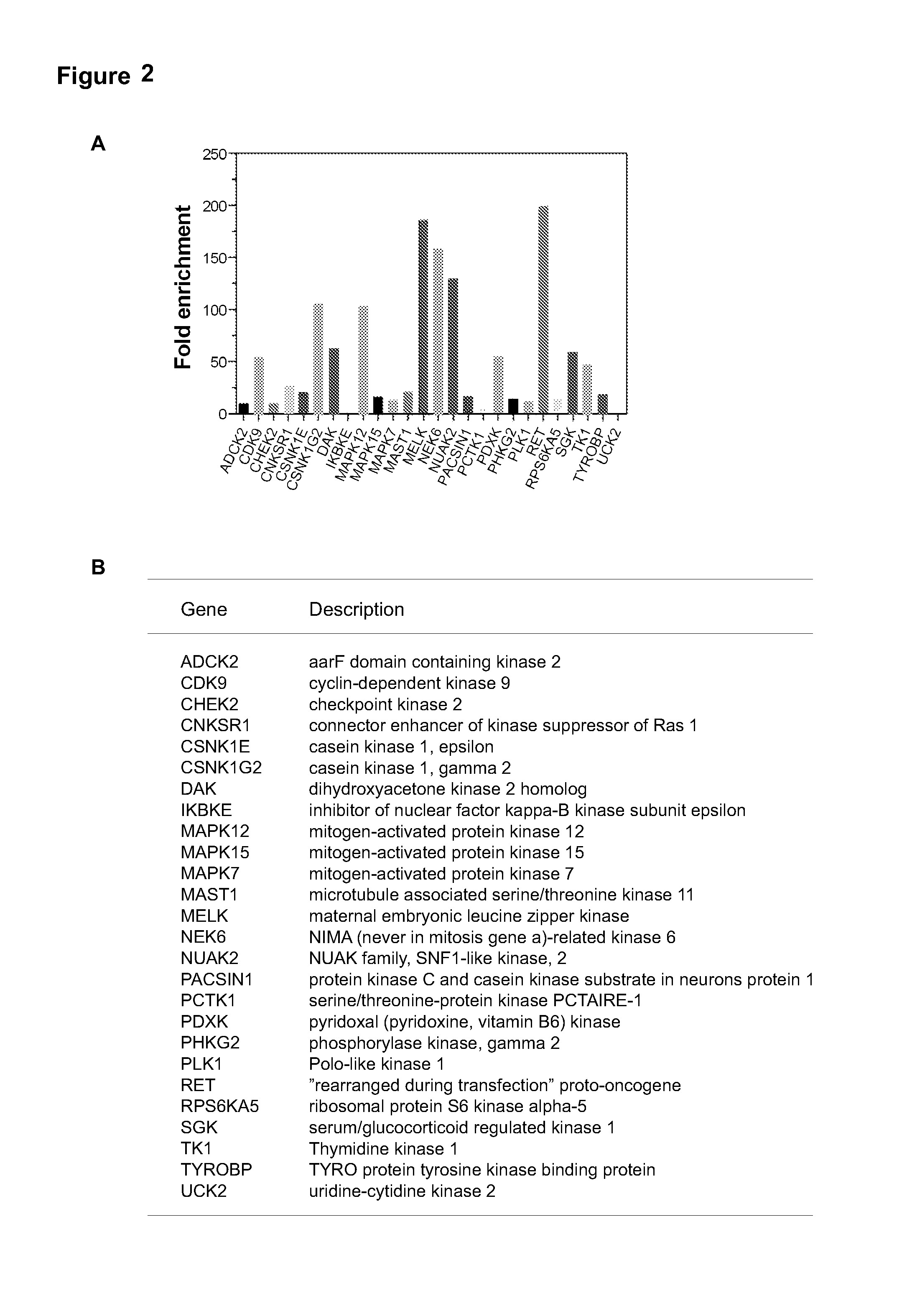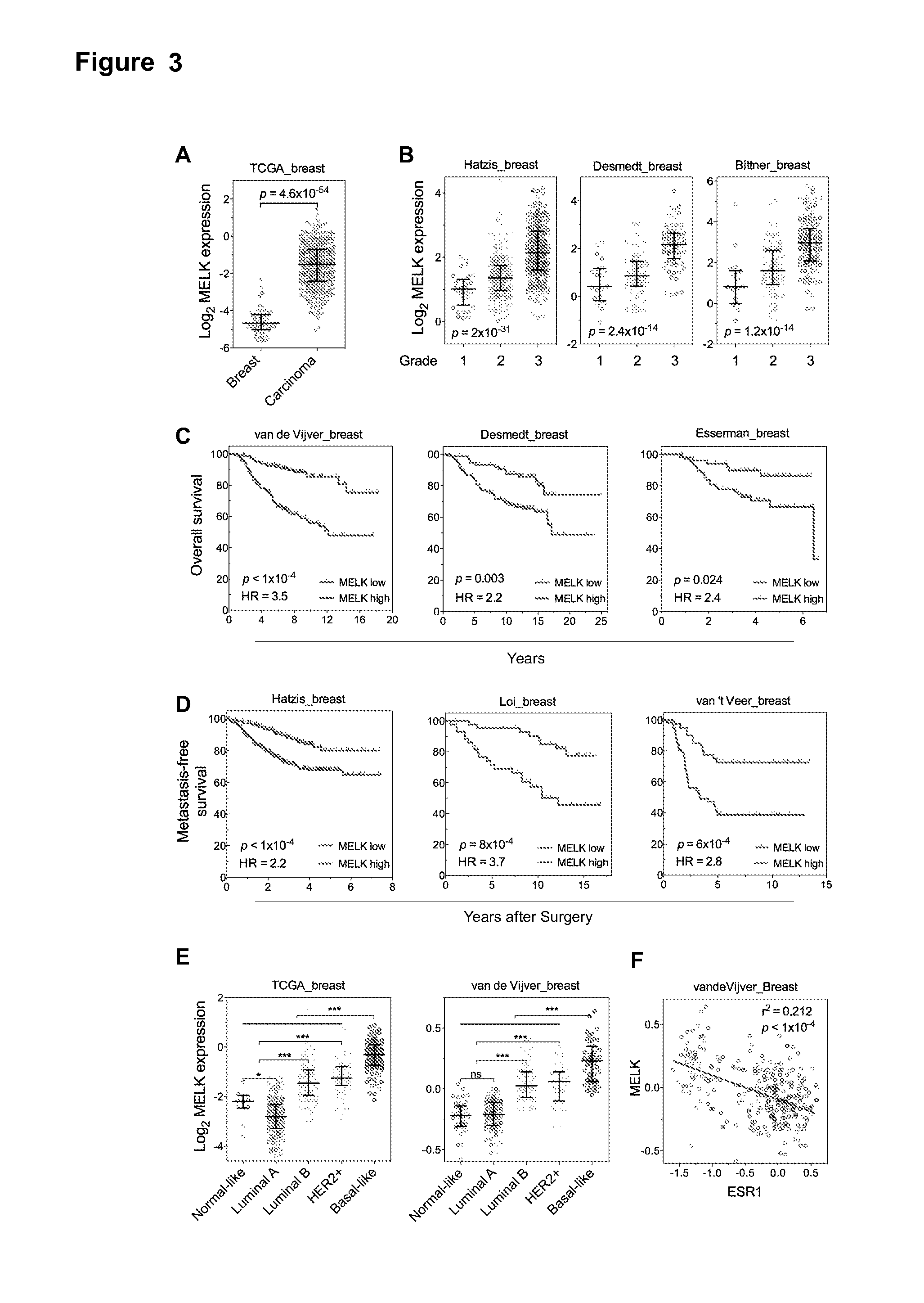MELK regulation for the treatment of breast cancer
a breast cancer and melk technology, applied in the direction of enzymology, drug compositions, transferases, etc., can solve the problems of relatively unresponsive bbc or tnbc cells to targeted treatment, and achieve the effects of inhibiting growth or proliferation
- Summary
- Abstract
- Description
- Claims
- Application Information
AI Technical Summary
Benefits of technology
Problems solved by technology
Method used
Image
Examples
example 1
Identification of Oncogeinc Kinases that Contribute to Tumorigenesis of HMECs In Vivo
[0115]Transformation of primary human cells with defined genetic elements is a powerful method for identifying specific genes or pathways that are involved in oncogenic transformation (Hahn et al., 1999; Zhao et al., 2004). To this end, an in vivo tumorigenesis model was developed that resembles the pathogenesis of human breast cancer. A human mammary epithelial cell (HMEC) based transformation system suitable for the study of oncogenic kinases was previously established (Zhao et al., 2003). To further optimize this system, HMECs were engineered to express a dominant negative form of p53 (p53DD), NeuT and PI3KCA H1047R. The resulting cells, termed HMECs-DD-NeuT-PI3KCA, were fully transformed as judged by their ability to form orthotopic tumors in mice (FIG. 1A). This model resembles the concurrent activation of ErbB2 and PI3KCA that is prevalent in breast cancer (Stephens et al., 2012).
[0116]Next, a...
example 2
MELK is Highly Overexpressed in Breast Cancer and Strongly Predicts Poor Outcomes
[0117]One of the top-scoring hits from the genetic screen described in Example 1 was the maternal embryonic leucine zipper kinase (MELK) (FIG. 2A), an atypical member of AMPK serine / threonine kinase family (Lizcano et al., 2004). While little is known about the exact biological functions of MELK, this kinase is frequently overexpressed in a variety of tumors (Gray et al., 2005). Remarkably, when we analyzed MELK expression in the breast cancer dataset of The Cancer Genome Atlas (TCGA) (Koboldt et al., 2012), a large cohort consisting of 392 invasive ductal breast carcinomas and 61 samples of normal breasts, the level of MELK transcript was approximately 8-fold higher in breast cancers compared to their normal counterparts (FIG. 2A). The p value for this differential expression (4.6×10−54) places MELK as a top 1% overexpressed gene in breast cancer (FIG. 2A). The overexpression of MELK in breast carcinom...
example 3
Ovexpression of MELK in Different Subtypes of Breast Cancer
[0122]Given the heterogeneity of breast cancer, MELK expression was analyzed in different subtypes of breast cancer as defined by gene expression profiling (Perou et al., 2000; Sorlie et al., 2001). Samples in multiple breast cancer datasets were characterized by PAM50 gene signature (Parker et al., 2009). In four independent cohorts totaling more than 1200 patients, a strikingly similar pattern of MELK expression was observed among these different subtypes (FIG. 3E, 4E). Luminal A and normal-like subtypes displayed the lowest expression of MELK. Luminal B tumors, which have lower expression of luminal-specific genes (Solie et al., 2001) and HER2-enriched tumors had higher MELK expression than luminal A or normal-like tumors (p<0.0001). Finally, basal-like breast cancers (BBC) showed the highest expression of MELK among all subtypes (p<0.0001). These observations indicate a pattern that MELK expression negatively correlates ...
PUM
| Property | Measurement | Unit |
|---|---|---|
| time- | aaaaa | aaaaa |
| diameter | aaaaa | aaaaa |
| size | aaaaa | aaaaa |
Abstract
Description
Claims
Application Information
 Login to View More
Login to View More - R&D
- Intellectual Property
- Life Sciences
- Materials
- Tech Scout
- Unparalleled Data Quality
- Higher Quality Content
- 60% Fewer Hallucinations
Browse by: Latest US Patents, China's latest patents, Technical Efficacy Thesaurus, Application Domain, Technology Topic, Popular Technical Reports.
© 2025 PatSnap. All rights reserved.Legal|Privacy policy|Modern Slavery Act Transparency Statement|Sitemap|About US| Contact US: help@patsnap.com



